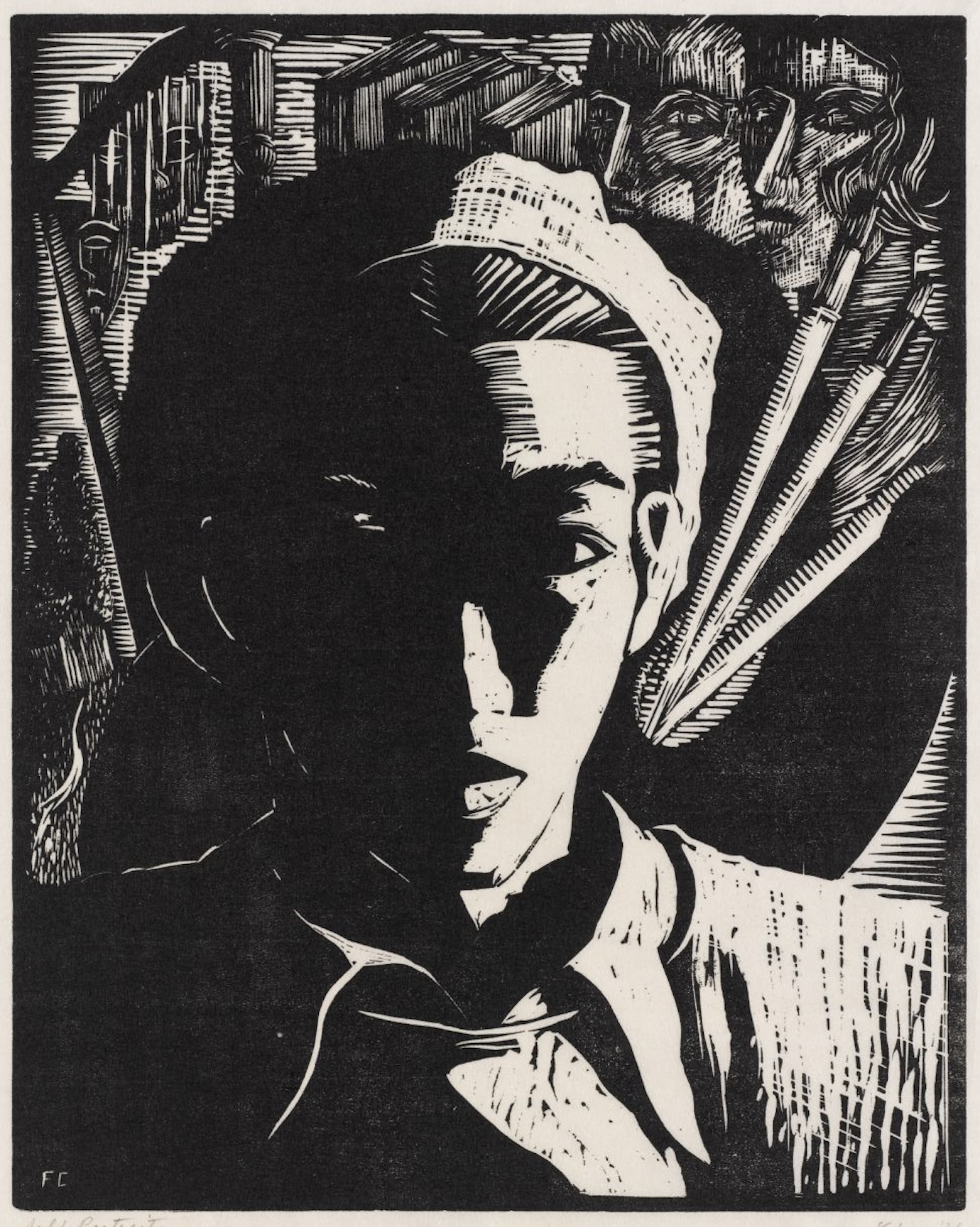Asian American, Native Hawaiian, and Pacific Islander (AANHPI) Heritage Month provides a vibrant platform to recognize the incredible contributions of these communities to our cultural tapestry. This article aims to explore the remarkable stories of three artists whose works grace the Seattle Art Museum’s collection, illustrating how their experiences reflect a broader narrative of heritage and identity.
The Legacy of Fay Chong
Fay Chong (1912-1973) emerged as a significant figure within the Seattle art scene. Born in China and relocating to Seattle in 1920, Chong faced the hardships of the Great Depression. However, he found his artistic voice amidst adversity, thanks to the support of the Works Progress Administration, which nourished his talent by providing him with a steady income in exchange for artwork. This initiative allowed him to produce significant pieces, including distinctive black and white linocut prints.
One notable piece, “Self-Portrait” (1936), showcases Chong surrounded by symbols of creativity such as a paintbrush, books, and theatre masks, gazing thoughtfully at the viewer. This artwork not only reflects his place in the art community but also symbolizes his struggle and resilience as a young artist. His other work, “Marine Hospital” (1938), artfully captures a building that still stands today, highlighting its unique silhouette, an approach that emphasizes Chong’s mastery of contrast and form.
Chong fostered strong connections with fellow artists like Kenneth Callahan and Julius Twohy, pointing to a flourishing community of creators during this period. His lasting impact is evident in his inclusion in SAM’s permanent collection, where nine of his works are preserved.
Kenjiro Nomura: A Pioneer of American Realism
Kenjiro Nomura (1896-1956), a pivotal figure in the Seattle Art Museum’s history, opened SAM’s inaugural solo exhibition in 1933. Originally from Japan, Nomura settled in Tacoma and later the International District in Seattle, quickly drawing on his cultural roots while embracing Western artistic techniques. His unique blend of American realism and Japanese aesthetics culminated in striking landscapes, urban scenes, and more.
In “Street” (1932), he captures the vibrant heart of Seattle, showcasing the intersection of Fourth Avenue and Yesler Way, a crucial area for the Japanese American community. However, the artist’s journey was not without hardships, as his life faced turmoil during WWII. He eventually returned to his craft post-war, culminating in several works featured in SAM’s collection.
Nomura’s legacy echoes through exhibitions that pair his works with others, reminding us of the strong bond among artists of Japanese descent during a transformative era.
Suchitra Mattai: Weaving Stories Through Art
Suchitra Mattai, an Indo-Caribbean artist, uses her mixed media artworks to honor and reimagine her ancestry. Through the meticulous stitching of vintage saris and embroidery, Mattai connects her heritage with contemporary storytelling. Her recent exhibition “she walked in reverse and found her songs” at the Seattle Asian Art Museum presents a captivating narrative centered on her ancestors who endured the transition from India to the Caribbean.
A standout piece, “Pappy’s House” (2024), illustrates the unique blend of her cultural influences by reconstructing her grandparents’ home using traditional crafts. Mattai’s commitment to her roots extends beyond her art to personal storytelling, challenging the notion of craft as secondary to fine art.
Her work has quickly gained recognition across the U.S., highlighting her impactful voice within the AANHPI community and the larger art world.
Impact and Reflection
The narratives of Fay Chong, Kenjiro Nomura, and Suchitra Mattai collectively showcase the rich tapestry of experiences within the AANHPI heritage. Their stories are a testament to perseverance and creativity, significantly impacting the art community and enhancing understanding of cultural diversity in American life. Recognizing these contributions enriches our awareness of heritage and influences how we approach services like transportation for art events and cultural festivals.
Why Personal Experience Matters
While reviews and feedback are useful, nothing compares to experiencing art in person. As such, booking a personalized ride through LocalsRide can enhance your cultural outings and ensure you don’t miss out on significant experiences in your journey through art and heritage. With verified providers and transparent pricing, users can hire a driver who knows the best routes to galleries or exhibits, ensuring a pleasant experience without unforeseen expenses.
In conclusion, the stories of Chong, Nomura, and Mattai remind us of the profound impact of AANHPI artists on our cultural landscape. For your next journey to explore art events or cultural heritage, consider the user-friendly services of LocalsRide, allowing you to book your transfer and travel effortlessly while embracing the vibrant history and artistry that enrich your experience.
Start planning your next adventure and secure your worldwide transfer with LocalsRide. Reserve su viaje.

